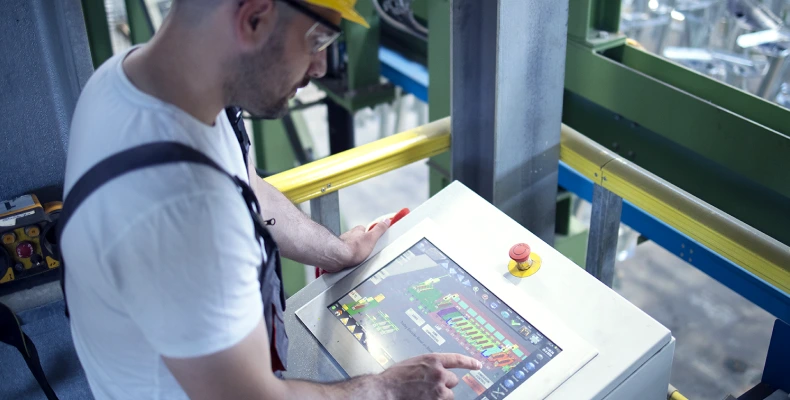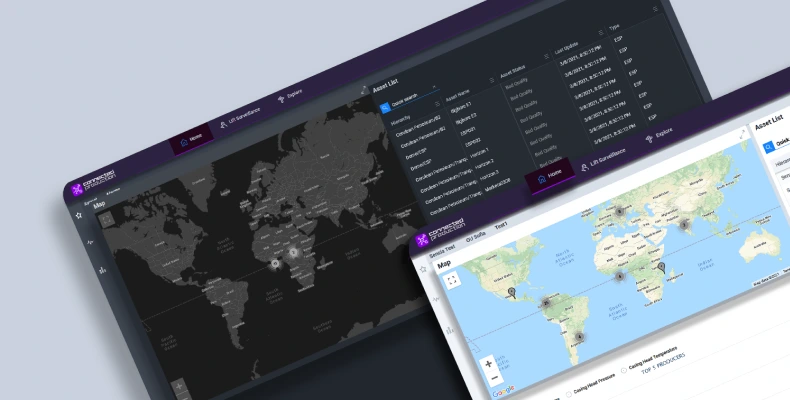We use cookies to ensure we give you the best experience on our website. By clicking Agree you accept our Privacy and Cookies Policy.
How to use business process automation to improve oil and gas production

Volodymyr Yakubovskyy
Author

March 5, 2024
Date

 9 minutes read
9 minutes read
Content
With demand increasing and technological advances driving growth, it is likely that the oil and gas industry will continue to experience a period of expansion in the coming years.
The global oil and gas production predictions for 2023 are just starting to come in, and the outlook looks so good! Oil demand is expected to rise by 1.7 mil b/d in 2023 and remain strong due to rising global populations, economic growth, and lower oil prices.
The International Energy Agency (IEA) forecast that U.S. natural gas marketed production will increase to a record-high 106.6 Bcf/d in 2023.
Overall, it looks like the and gas industry is set for a bright future! We may not know exactly how much of an impact these predictions will have until 2023, but we can certainly be optimistic. By then, the industry is likely to be even bigger and more powerful than ever before!
Oil and gas production is an incredibly complex process that involves a wide set of stakeholders, processes and technologies. At each stage, there are numerous operational challenges that can arise, ranging from safety and environmental issues to managing the logistics of moving crude oil or natural gas from extraction sites to end-users.
How software solves challenges of oil and gas companies
Common challenges in oil and gas production include:
1. Regulatory compliance: Companies in the oil and gas sector must comply with stringent regulations while monitoring their operations for safety and emissions standards. This requires a detailed understanding of local rules and regulations as well as efficient tracking systems to ensure all areas of production are meeting these strict requirements.
2. Environmental risks: Operating within the fuel industry means actively monitoring environmental risks such as air pollution, water contamination and seismic stability. Companies need to be aware of potential environmental issues that can arise due to their operations, and have systems in place to alert them of any issues that may occur.
3. Supply chain coordination: The oil and gas industry has a complex supply chain with multiple stakeholders involved in the production process. This requires companies to effectively coordinate between different teams, including suppliers, equipment vendors and other service providers. It’s important for companies to manage the logistics of moving crude oil or natural gas from extraction sites to end-users.
4. Cost management: There are numerous costs associated with oil & gas production such as exploration expenses, operating costs and capital investments in equipment or facilities upgrades. Companies must be able to monitor and manage their costs in order to remain financially viable.
Software solutions can help oil and gas companies overcome these challenges, allowing them to efficiently streamline their operations and gain greater control over their production processes. By automating business processes, companies can benefit from enhanced regulatory compliance, improved environmental risk management, better supply chain coordination, and more cost-effective operations.
Business process automation helps ensure that all stakeholders are working together in a coordinated manner with efficient tracking systems for monitoring performance and reporting any non-compliances or irregularities. Automated workflow systems also allow companies to quickly identify cost discrepancies so they can take corrective action before it impacts the bottom line.

Types of process automation solutions for oil & gas production
Ultimately, software solutions can provide invaluable benefits to oil and gas companies, helping them navigate the complex challenges associated with production while gaining greater control over their operations. Taking advantage of software solutions gives oil & gas businesses the tools they need to successfully operate within a highly regulated and competitive industry.
Let’s explore the different types of process automation solutions available in the oil and gas industry and how they work.
Asset management
This software helps in tracking, monitoring, and optimizing resources such as oil fields and wells used for production processes. It can also help identify areas that may be underperforming or not meeting industry standards.
Data analytics
A powerful analytics solution can provide visibility into the data collected from various sources like sensors and automation equipment to uncover actionable insights that help optimize operations within an oil & gas facility.
Real-time monitoring
This type of software provides a central view of the production facility, which can be used to assess current performance and detect potential issues at an early stage. It also helps in analyzing data in real-time and providing the right information to decision makers in a timely fashion.
Predictive maintenance
Predictive maintenance solutions help oil & gas producers determine when equipment is likely to fail before it does so, resulting in improved operational efficiency and cost savings from avoiding sudden breakdowns or repairs. This also helps reduce downtime associated with unexpected machine breakdowns.
Compliance management
Regulatory compliance is especially important within the oil & gas industry due to strict safety regulations, environmental standards, and government oversight. Software solutions can help businesses stay up to date with the latest regulations and ensure that their production processes remain compliant at all times.
Collaboration tools
Collaboration tools enable oil & gas producers to easily share information between different departments, teams, and locations within the company. This helps streamline communication and ensure that everyone is working from the same playbook to maximize efficiency and minimize errors.
Security solutions
Implementing data security tools into your existing systems and processes will protect a facility’s data from potential cyber threats while also enabling secure remote access for authorized personnel. This ensures that sensitive data remains confidential and protected at all times.
Digital twin technologies
Digital twin technology replicates hardware assets in digital form, providing insight into the behavior and performance of physical systems. This helps oil & gas producers to monitor their production processes in real-time and make informed decisions about how to optimize them for optimal efficiency.
Cloud migration
Cloud migration solutions allow businesses to move their data and applications from on-site hardware or legacy systems to cloud-based platforms, enabling faster deployment times and scalability. Migrating from desktop to web-based solutions adds flexibility, scalability, and cost-effectiveness of cloud computing while reducing the need for in-house IT infrastructure and support.
By leveraging the right automation software, oil & gas producers can gain greater insight into their operations and increase efficiency across the board – leading to cost savings, improved safety, compliance with regulations, and increased customer satisfaction.

Steps for optimizing gas and oil production
Business process automation is necessary for your company’s digital transformation. The ultimate goal here is to reach a competitive edge, make the most of your resources, and increase profits.
Follow these steps to make sure your oil and gas optimization process runs smoothly and efficiently.
1. Assess current business processes
To optimize gas and oil production, first assess the current business processes in place. Take a look at how operations are currently being managed and consider potential areas of improvement. This step is crucial to understanding where automation could help increase efficiency and productivity.
However, analyzing your business processes is not as easy as it sounds, and this is where a business analyst can provide significant value to your organization.
A business analyst is a professional who assesses business processes and procedures to identify areas for improvement. In the case of gas and oil production, a business analyst can help you identify inefficiencies and bottlenecks in the production process. They analyze the data collected from various sources, such as sensors, machines, and production systems, to determine the root causes of issues and recommend solutions to improve performance.
2. Identify automation opportunities
After assessing the current business processes, start looking for opportunities to integrate automation solutions into existing operations. Think about what tasks could be more effectively completed with automated systems or software programs that don’t require human input every time they’re used.
3. Find experienced software development partner
Once you’ve identified potential automation opportunities it’s important to find an experienced software development partner who can create custom solutions that meet the needs of your business. Make sure you choose a partner with a proven track record in building successful automation systems and a commitment to customer satisfaction.
At Blackthorn Vision, we have over a decade of experience helping oil and gas companies automate their processes and optimize operations. We specialize in developing custom software solutions for oil and gas industry that are tailored to the unique needs of each client.
4. Implement automation solutions
After finding the right software development partner, it’s time to start implementing automation solutions. This step involves testing different systems, creating user interfaces that are easy to understand and use, and training staff on how to use the new tools effectively.
5. Monitor & measure results
Finally, once automation solutions have been implemented it’s important to monitor and measure their results. Pay close attention to how automated processes are performing compared to manual ones and make adjustments as needed for maximum efficiency and productivity. This will help ensure that your gas and oil production is optimized for the long term.
By the way, we created a detailed digital transformation roadmap that can be useful in your business process automation journey.

Developing your oil and gas software: how we can help
We have extensive experience in developing custom software solutions for oil and gas companies. We helped Sensia upgrade their web-based solution, which allows them to monitor their equipment more effectively and efficiently. Our front-end engineers provided the necessary expertise to update the user interface, making it easier to access information.
Now that you know how we can help your business with oil and gas software development, let us take care of the rest! Contact us today to create custom oil and gas software or modernize an existing application to meet your business needs. Let’s make it happen!


















































